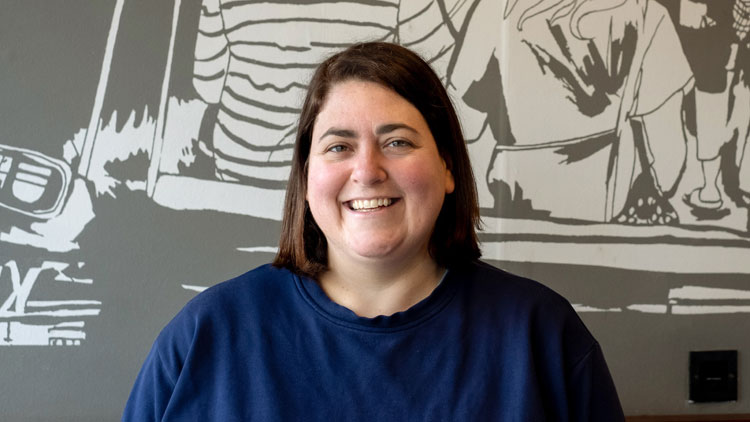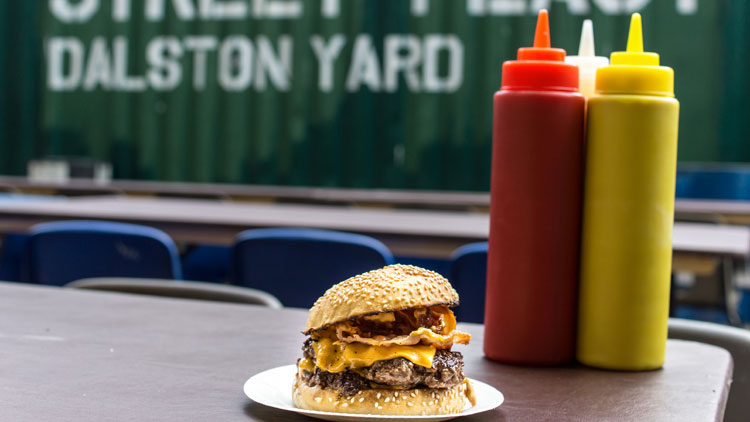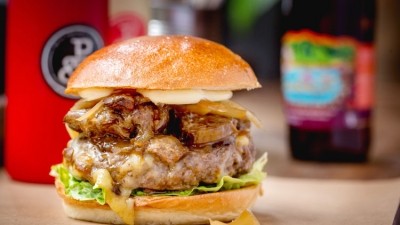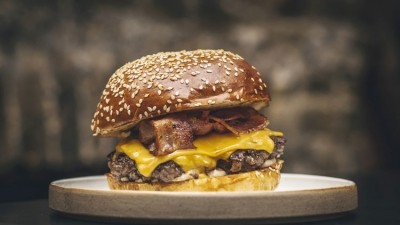Bleecker Burger: from start-up operator to established player
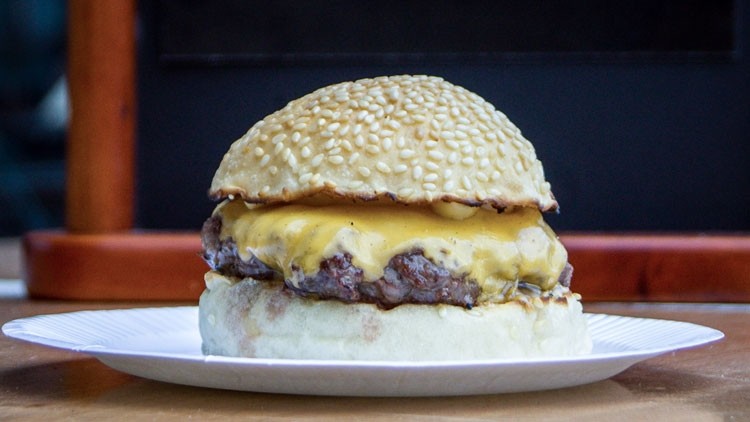
When we meet at Bleecker Burger’s office HQ, in the WeWork Bishopsgate building, Zan Kaufman technically shouldn’t even be there. The founder of the popular London-based street food turned restaurant group still has a month of maternity leave left to take, but has been dipping in and out of work, probably doing “more than she realises”, according to business partner and brand director Liam O’Keefe.
Needless to say, Kaufman says the experience of parenthood has left her tired – but it makes for a contemplative exchange. With a reputation as a straight talking former corporate lawyer from New York, she is in a more thoughtful, soul searching mood than usual.
There’s another reason for this change in demeanour: Kaufman finds herself at a key juncture for the business, as it emerges from a start-up operator to a more established player with its biggest footfall site yet in Westfield London about to open.
Street food origins
One of the golden generation of street food concepts, Bleecker built a reputation for one of the most uncompromising burgers in London’s street food scene, based on a no-frills formula of patty, bun and cheese. Graduating from a street food truck to a unit in Spitalfields Market, the brand has since grown with restaurants in Victoria and Bloomberg Arcade in quick succession. Westfield will follow a pause for breath, which has seen Bleecker establish its existing sites and bolster the senior team with some experienced hires.
Until now, the quality of the burger has been the main focus of the business and only now is Kaufman finding space to build on other elements that make a successful hospitality business – though the pressure to deliver excellence is ever present, she admits. “Most of the pressure comes from myself. In the beginning it was easy. We were doing everything we could to make a burger that would instantly let people know they were eating something different – the burger they hadn’t met yet in their entire life.
“As we’ve grown, it’s become more about profitability, longevity and people. With those factors in the mix, everything has become a lot more complicated and needs more thinking and planning.”
Thinking and planning – and indeed taking time out of the business she founded – has finally become possible with the appointment of Nicola Pegues, the Byron and Nando’s alumnus, who came in earlier this year as head of operations. It’s a position Kaufman admits she has always struggled with, due to her gravitating towards ops, although the high calibre appointment provides a strong counterweight to this tendency. With Pegues in charge of ops, Kaufman can now concentrate on property, investment and culture, areas she hasn’t been able to devote as much time to as she’d have liked in the past because of an inability to let go operationally.
“Ops is where I felt most comfortable and most natural,” Kaufman says. “So to relinquish it was difficult. I’d hand over the reins but not really. It was a constant issue with new people.”
Pegues’ background was a big draw for Kaufman, who hails Nando’s as a restaurant “I always feel safe in”. She has provided a critical voice to Kaufman’s conventional wisdom, which has led to some soul searching about the best way to expand, and indeed Bleecker’s entire operating model.
“I always want really small sites,” says Kaufman in defence of Bleecker’s two bricks-and-mortar restaurants – Bleecker Bloomberg has 36 seats inside and 16 outside, Spitalfields makes use of communal seating and Victoria has just 20 covers – which are small by burger restaurant standards. “I want it to be busy, chaotic and exciting, and always be a bit too big for the space you’re in. Nicola has questioned that. We need more space for the team. It’s a hard environment. It’s hot. They don’t have their own room.
“The pressures build up and it becomes harder to operate in a space that gets busier and busier. She really comes from the team’s perspective.”
That said, the company’s Westfield restaurant, opening in the Shepherd’s Bush shopping centre’s food court, will continue the company’s approach to taking on relatively small sites, although this time round it will be what Kaufman calls “our true format”. Here it will go head to head with the likes of Five Guys, but again that’s something the company is used to, with its low-key Victoria restaurant smack bang opposite an imposing, glass-fronted Shake Shack.
Kaufman is grappling with other aspects of the business as she begins to reacclimatise at Bleecker, part of a wider shift for the New Yorker as she takes a more CEO-like, big picture view that moves beyond what’s on the plate. She admits to having spent too much time agonising over building the perfect burger in the past, and there’s now a game of catch up being played with some of the other, more conventional business tenets. “In the beginning we were so food focused, that’s all we saw. It’s kept the food to a very high standard, but also left gaps that we’re now filling. We’re now circling back a bit, through our systems, financials and targets.”
Beyond the product
While Kaufman would never admit to being perfectly satisfied with the burger – “If you start thinking the food’s done, you’re done” – she’s happy the company is continually pushing for it to be as good as it can be. The focus in the past has been relentless on the hero product, with Bleecker serving a very tight menu, short on gimmicks and garnishes. The burger menu is a mere six strong and in reality there are only three variations – a cheeseburger, which can have bacon added to it for an extra pound (both of which also come as doubles), a blue burger that uses blue cheese, and a veggie burger. Then there’s fries – potato, sweet potato, a mixture of the two as well as angry fries with hot sauce and house fries with house sauce.
Drinks wise, milkshakes make up the bulk of the offer, with a short selection of Square Root soda and craft beers, and that’s it.
Kaufman is now, however, turning her attention more to the company culture and its vision. “We have a great burger, but so what? It started to become not enough. We started to talk about other things. Diversity and inclusion came up a lot. Where our vision was originally about food, we started to incorporate these ideas. We knew it needed to be more than just burgers.”
She has used her platform as a female leader in a male-dominated industry, and origins in the media-friendly street food scene, to promote this vision. It is always a work in progress though, and while the head office has a female majority, she is bothered that it is currently all-white.
“Culture is something I didn’t start thinking about until a year and a half ago,” she says. “We were doing it but I wasn’t consciously thinking about how to incorporate it into the daily life of the business.”
Dealing with everything on the other side of the counter, brand director Liam O’Keefe has a unique inside-outside perspective on the business. Originally a burger blogger and customer of Bleecker, O’Keefe came on board at Bleecker’s street food market stage and tries to keep in mind this original consumer view.
Even in those early days he recalls concern about developing the operation without Kaufman’s daily presence. “When it started, there was excitement among the team because Zan was there every day. When she stopped [working] at the food truck, I wondered whether Bleecker could survive, because her personality coming through was a given.”
In actual fact, those early days were a baptism of fire, which have made the foundations stronger. “The truck’s a really tight space, you had to get along or it wouldn’t work,” he adds. “Street food is hard. You grow from that. Now we ask, how can we replicate that at bigger sites? How can we create that team environment, while staying true to the Bleecker beginnings?”
Great expectations
As the man in charge of brand and marketing, O’Keefe knows only too well how high expectations are and the pressure this creates. “I’ve seen people land at Heathrow and come into London just for a Bleecker Burger, and then fly out. That’s a lot of pressure on meat and bun. That expectation needs to be there for every single burger. You never know who you’re serving. Everyone needs to be treated the same.”
While the offering has purposely been kept super concise in order to give the company the greatest chance to consistently meet such high expectations, O’Keefe says it also makes it more of a challenge because there’s nowhere to hide. “Being boring, keeping a tight menu, it’s hard to be disciplined. We know if we added things it would add a few more sales, but it’s too good a burger and too good a business to go off and lose focus.”
Unsurprisingly, Kaufman shares this view, and sees no reason to shake up the counter service operating model. “Simplicity, being really unambiguous, we do a few things and do them really well. Let’s not cloud the picture. That’s a really important brand value.”
It’s a value that will potentially get harder with every new restaurant Bleecker opens, and expansion is very much a goal. The company has plans to open 10 restaurants in London, with the possibility of spreading further afield, though perhaps it is more likely to expand into international territory than the regions.
Needless to say, this expansion will only take shape if the same quality can be maintained. As Kaufman says, she simply “wouldn’t feel confident expanding a burger [group] that wasn’t awesome”. The real hard work starts now.
A version of this article first appeared in Restaurant’s sister publication MCA and subsequently in the October issue of Restaurant magazine, the leading title for the UK's restaurant industry. For more features, comment, interviews and in-depth analysis of the restaurant sector subscribe to Restaurant magazine here. To subscribe to MCA, click here.
